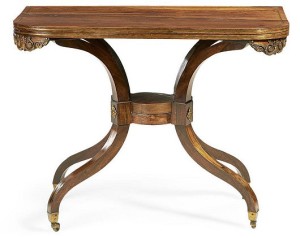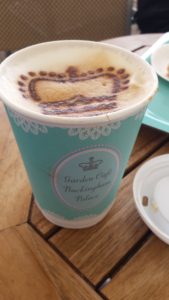Anyone with even the slightest connection with the art world knows that it is, shall we say, in a state of flux. With all that, very many of the art market publications have nevertheless sought to put the best face possible on the vicissitudes of the market and its players. For those of us in the trenches, one of the handiest publications continues to be the Antiques Trade Gazette, a weekly tabloid format compendium of real news within the trade in art and antiques, and if read diligently, something wherein trends and undercurrents can be sussed out. I say ‘sussed out’ because the paper never really gives much editorial to out and out failures within the industry- reports of auction items only partly taken up, changes in the volume of international sales, limited sales at fairs and discontinuing of fairs though reported factually yet editorially require readers to draw their own conclusions.
And we can, of course. This week’s paper is given over to an examination and frankly push forward of the annual TEFAF Maastricht fair opening March 10. In my last blog, I had said that Maastricht is arguably the best fair in the world, but I’ll go safely out on a limb and declare that it is the best, without much fear of argument. The world’s best dealers bring the best of their stock, and, traditionally, lots of business is done with serious collectors and museums. It has always seemed to me that, with fairs generally having been replaced with the virtual fair the internet offers 24 hours a day, seven days a week, the better fairs, and indeed in the case of Maastricht the best fair would be perennially exempt ‘virtual’ competition. I suppose I had ignored the fates of the Grosvenor House Fair, and more recently, Haughton’s discontinuing their New York International Fair and Art Antiques London, and the change after change in management and focus of Masterpiece London.
But apparently the difficulties that have beset all fairs has now so far invaded even Maastricht that the Antiques Trade Gazette is unable to, not hide precisely, but shall we say decline to occlude them. Davide Gasparotto of the Getty Museum is extensively quoted in the section about Maastricht, saying that even if a museum is not buying, and they aren’t, it is still worthwhile for a curator to attend, to, as he says, ‘take the pulse of the market’. Why? Why would he need to attend, if he’s not planning on doing so with a donor, with at least the intent to make a purchase? To network, at the expense of the museum he works for, and ultimately, to the detriment of the exhibiting dealers. Now, Gasparotto says, the preference is to deal privately.
Perhaps it is so, and it begs the question about the necessity of a dealer participating in a fair at all. The Antiques Trade Gazette in the same issue has the question answered by old master paintings dealer characterized as a Maastricht ‘stalwart’ Johnny Van Haeften. He has recently moved his gallery, presumably priced out, from London’s St James, to his home in the London suburbs, and this outing at the 30th Maastricht may be his last. Next year’s participation? To quote Van Haeften ‘We have not quite decided.’
As every school child knows, the proof of the pudding is in the eating. Although one loves to exhibit at Maastricht and visit it, it is still and all a selling exhibition. It will not long survive if it becomes, in the main, a venue for assessing the health of the market or a backdrop for an extended wine glass in hand opportunity to network. One has to assume that even the organizers of Maastricht know its future is uncertain. It launched a TEFAF New York last October, with another to follow in May of this year. One can only conclude that with the Maastricht fair now for all intents and purposes competing against itself, its days are numbered.





